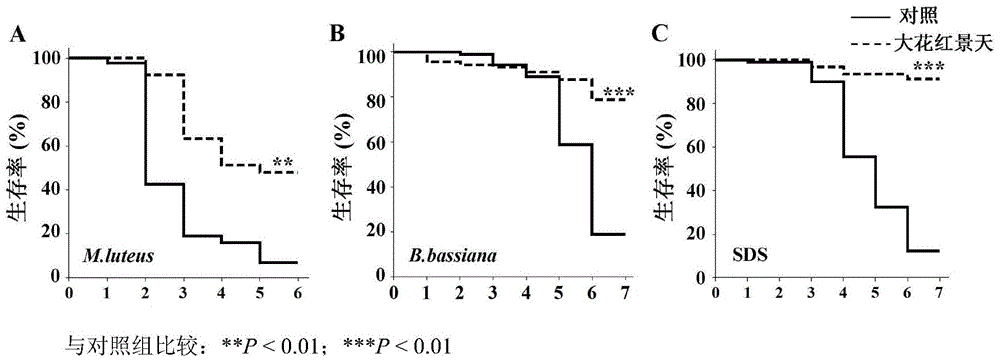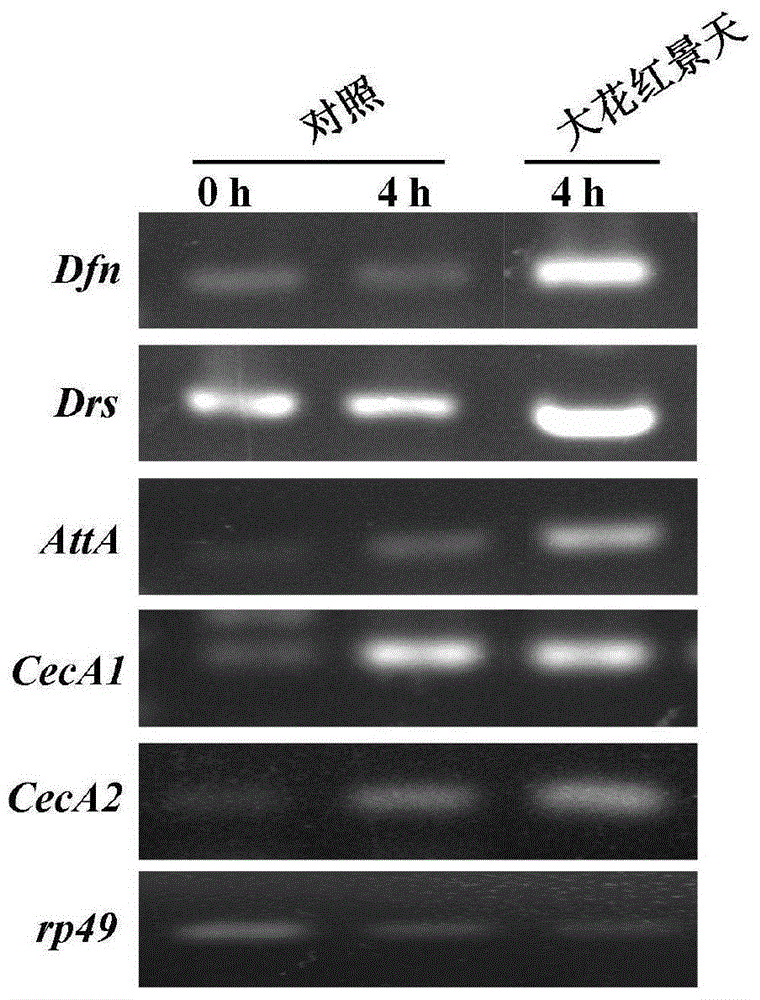Application of Tibet rhodiola crenulata extract in preparing medicament for resisting intestinal inflammation
A technology of Rhodiola grandiflora and its extracts, which can be applied in the direction of anti-inflammatory agents, drug combinations, antipyretics, etc., and can solve the problems that anti-intestinal inflammation research has not been reported.
- Summary
- Abstract
- Description
- Claims
- Application Information
AI Technical Summary
Problems solved by technology
Method used
Image
Examples
Embodiment 1
[0013] The preparation of embodiment 1 Rhodiola rosea extract
[0014] Weigh 20g of the dried root of Rhodiola daflora, crush it, soak it in 200mL deionized water for 12h, heat and boil on low heat for 3h, filter, then add 200mL deionized water and extract twice with the same method, combine the three extracts and concentrate to 200mL, that is to obtain 0.1g / ml (10%) Rhodiola rosea extract, and store it sealed at 4°C for later use. The content of salidroside in the extract of Rhodiola daflora was not less than 0.5% as determined by high performance liquid chromatography, which met the quality standard of "Chinese Pharmacopoeia" 2010 edition (Part 1).
Embodiment 2
[0015] Example 2 Effect of Rhodiola rosea extract on the survival rate of postfly after treatment with fungi Bassiana, M.luteus and inflammatory factor SDS
[0016] Preparation of B. bassiana spore liquid: spread B. bassiana on fresh LB solid medium, and culture it statically at 25°C for 7 days. The spores on the medium were collected with sterile PBS and filtered to measure the spore concentration. After the spores were centrifuged, the supernatant was discarded, and 5% sucrose solution (control group) or Rhodiola grandiflora extract containing 5% sucrose (experimental group) was added to the precipitate to prepare A 600 =40 spore solution, stored at 4°C for later use.
[0017] Preparation of M.luteus bacterial liquid: M.luteus (LB medium, 37°C) was inoculated into 200mL liquid medium for overnight expansion culture, the bacterial liquid was centrifuged at 4000r / min, 25°C for 10min, the supernatant was discarded, and 5% Sucrose solution (control group) or Rhodiola grandis ex...
Embodiment 3
[0020] Example 3 Effect of Rhodiola rosea extract on intestinal epithelial cells of fly after SDS treatment
[0021] In order to explore the deeper mechanism of Rhodiola grandiflora extract improving the survival rate of Drosophila after SDS treatment, this experiment used 7-Aminoactinomycin (7-Aminoactionnomycin D, 7-AAD) staining to analyze the death of intestinal epithelial cells Condition. As a nucleic acid dye, 7-AAD can only enter dead cells and combine with its DNA, and can produce red fluorescence after excitation.
[0022] Randomly collect 30-40 female fruit flies that have been eclosion for 3-4 days, and feed them with SDS (0.6%) solution containing 5% sucrose for 96 hours. The complete intestinal tract was isolated under a microscope, stained with 7-AAD for 30 minutes, fixed with paraformaldehyde for 10 minutes, stained with DAPI for 10 minutes, mounted with glycerol, observed and photographed under a fluorescent microscope. About 10 Drosophila intestines were iso...
PUM
 Login to View More
Login to View More Abstract
Description
Claims
Application Information
 Login to View More
Login to View More - R&D
- Intellectual Property
- Life Sciences
- Materials
- Tech Scout
- Unparalleled Data Quality
- Higher Quality Content
- 60% Fewer Hallucinations
Browse by: Latest US Patents, China's latest patents, Technical Efficacy Thesaurus, Application Domain, Technology Topic, Popular Technical Reports.
© 2025 PatSnap. All rights reserved.Legal|Privacy policy|Modern Slavery Act Transparency Statement|Sitemap|About US| Contact US: help@patsnap.com



